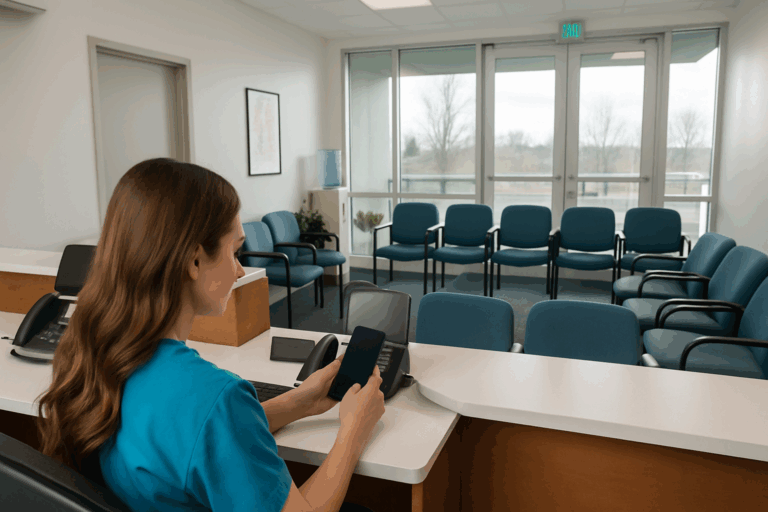In recent years, Direct Primary Care (DPC) has emerged as a promising alternative to traditional healthcare models, offering patients more personalized attention and comprehensive care. As this patient-centered approach gains traction, one technology stands out as a game-changer for DPC practices: Voice over Internet Protocol (VoIP). Let’s explore how VoIP is transforming the landscape of DPC and why it matters for both providers and patients.
1. Enhanced Accessibility
DPC practices pride themselves on offering 24/7 access to healthcare providers, a feature that sets them apart from traditional models. However, this level of availability presents a significant communication challenge, especially for smaller practices with limited staff. VoIP systems solve this problem with advanced call routing features, ensuring patients can reach the right provider quickly, even outside regular office hours.
With VoIP, you can implement intelligent call routing strategies that direct calls based on time of day, provider availability, or specific patient needs. For example, you could set up a system where after-hours calls are routed to an on-call provider’s mobile phone, ensuring continuous care without overwhelming your staff.
Moreover, VoIP systems often include features like voicemail-to-email transcription, allowing providers to quickly triage patient concerns even when they can’t answer the phone immediately. This level of accessibility not only improves patient satisfaction but also helps manage urgent issues more effectively, potentially reducing unnecessary emergency room visits.
2. Cost-Efficiency
Controlling costs is essential for smaller DPC practices, and this is where VoIP truly shines. Traditional phone systems often have hefty installation fees, expensive hardware, and rigid calling plans. In contrast, VoIP systems can reduce communication expenses by up to 50% compared to traditional phone lines.
The savings come from various sources:
- Lower per-call costs, especially for long-distance or international calls
- Reduced hardware requirements, as most VoIP systems work with existing computers and smartphones
- Elimination of separate networks for voice and data, simplifying your IT infrastructure
- Flexible pricing models that allow you to pay only for the features and lines you need
These cost savings allow you to reinvest in patient care, improve your facilities, or even lower your subscription fees to attract more patients. For a DPC practice operating on thin margins, the financial benefits of VoIP can be transformative.
3. Integrated Communication Services
Modern VoIP platforms offer much more than just voice calls. They integrate various communication channels into a single, unified system. This integration can revolutionize how your practice operates and interacts with patients. Key integrated services include:
- Secure messaging: Patients can securely send non-urgent questions or follow-ups, reducing phone traffic and improving response times.
- Video conferencing: You can easily implement telemedicine services, expanding your reach and offering convenience to patients who find it difficult to come to the office.
- Fax services: Integrate digital faxing directly into your communication system, streamlining referrals and record exchanges with specialists.
- Automated appointment reminders: Reduce no-shows and improve schedule adherence with automated voice or text reminders.
Centralizing these services creates a more efficient workflow for your staff and a more seamless patient experience. This level of integration supports the preventive care focus that is central to the DPC model, making it easier to maintain regular contact with patients and manage their health proactively.
4. Scalability and Flexibility
As DPC practices grow, their communication needs evolve. One of the significant advantages of VoIP systems is their scalability and flexibility. Unlike traditional phone systems that might require significant hardware upgrades or new line installations to expand, VoIP systems can grow with your practice effortlessly.
Need to add a new provider or staff member? With VoIP, you can often add a new line or extension with just a few clicks in an online portal. Want to set up a temporary triage line during flu season? VoIP systems allow you to create and manage virtual numbers easily.
This flexibility extends to how and where you work. With VoIP, your providers can take calls or access voicemail from anywhere with an internet connection. This feature is particularly valuable for DPC practices that offer home visits or have providers who rotate between multiple locations.
Moreover, as new communication technologies emerge, VoIP systems often integrate them quickly. This future-proofing ensures that your practice can stay at the forefront of healthcare communication without constant system overhauls.
5. HIPAA Compliance and Security
Data security is paramount in healthcare, and DPC practices are no exception. Leading VoIP providers offer HIPAA-compliant solutions, ensuring that patient information remains secure whether communicated via voice, text, or video. Key security features often include:
- End-to-end encryption for all communications
- Secure user authentication to prevent unauthorized access
- Detailed call logs and reporting for auditing purposes
- Secure voicemail with password protection
Choosing a HIPAA-compliant VoIP system allows you to confidently communicate with patients and other healthcare providers without fear of data breaches. This level of security is essential for maintaining patient trust and meeting regulatory requirements.
Additionally, many VoIP systems offer advanced features like call recording and archiving. While these must be implemented carefully to maintain HIPAA compliance, they can be invaluable for quality assurance, training, and medico-legal protection.
The synergy between DPC and VoIP technology offers a promising path forward in healthcare. VoIP is a critical enabler of DPC’s success, enhancing communication, reducing costs, and improving patient engagement. By embracing VoIP, DPC practices can fulfill their promise of more accessible, personalized, and effective healthcare delivery. To learn more about how VoIP is reshaping Direct Primary Care, check out our ebook “Building Better Systems Around Patient-Centered Care: A New Communications Model for Direct Primary Care Providers”

Optimize Your DPC Practice with Our Comprehensive Guide
Discover how to enhance patient communication, streamline operations, and reduce costs in your Direct Primary Care practice. Download our insightful guide now!




